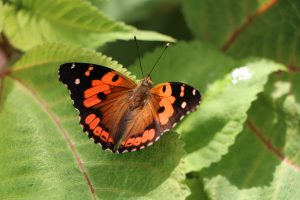Locally Led Conservation
What Is Locally-Led Conservation?
The process of identifying key landscape features and then discussing the conservation needs with those who care about the land is a powerful action. It provides a clearer picture of which critical natural resource concerns to address first, where they are on the landscape, and how they impact ecosystems. This can result in more effective, cost-efficient conservation on the ground — motivated by communities that understand the land and what it needs from them. Visit the NRCS Social Sciences Institute for publications that will help locally-led conservation efforts.
Often, resources for addressing identified conservation concerns are from non-local sources. Federal, state, and local governments can channel assistance through local Conservation Districts.
Locally-led conservation is based on the principle that local people make the best decisions for their own communities. This was recognized even 60 years ago by the establishment of county conservation districts to address natural resource concerns. Then, 30 years ago RC&D councils were established to solve environmental, economic and social problems facing communities. Today, Hawaii’s Conservation Districts and RC&D councils work together with the USDA Natural Resources Conservation Service to facilitate a locally-led conservation process. Locate the offices nearest you.
How Does It Work?
Using locally-led conservation typically involves a sequence of steps so that the entire community is involved in both planning and implementation. These steps include:
- Reaching out to the public and bringing local stakeholders together
- Using a needs assessment to analyze local issues and concerns
- Setting local priorities based on public input and needs assessment
- Identifying the resources available to address local needs and priorities
- Developing and implementing a plan for action
- Reviewing and evaluating needs and accomplishments
Every step in this process helps accomplish community goals. Involvement breeds commitment, and projects built on a locally-led process will have local benefits that the community can both experience and be proud of. These steps can be incorporated with the conservation planning process to accomplish community-supported conservation planning on a variety of scales.
How We Can Help
In Hawaii’s West Oahu SWCD, we are setting a precedent to establish a process that helps communities address natural resource concerns. This initiative is made up of local people that help guide communities in this locally-led process. Facilitation of local involvement is one of the backbones of the Conservation Partnership.
The Natural Resource Concerns
Through the locally-led process, Conservation Districts, RC&D Councils and the Natural Resources Conservation Service will working on current conservation issues. The next meeting to address the items below and more will be held on April 6, 2017.
- Water quality
- Farmland protection
- Nutrient management
- Creative economic development
- Watershed education
- Ecosystem restoration
- Reducing erosion and sediment runoff in rural and urban communities
- And many others.
Get Involved
April 6, 2017 – West Oahu SWCD Meeting Agenda
We in the Conservation Partnership can’t help communities accomplish their goals without committed local people. Please contact your local SWCD Office to be part of the solution. For West Oahu, contact [email protected] or register for our e-news
Visit the National Association of Conservation Districts website on locally-led conservation  for more information and tools.
for more information and tools.
Visit the NRCS Social Sciences Institute, a great source of information on communities and locally-led conservation methods and tools.
*Content adapted for Hawaii from this NRCS page
* Image by Dan Dennison
